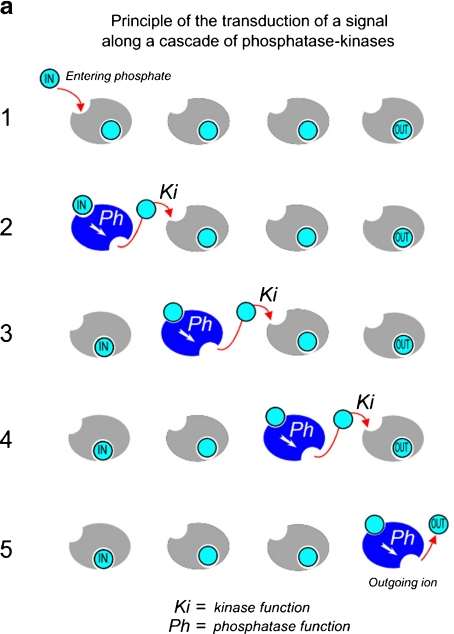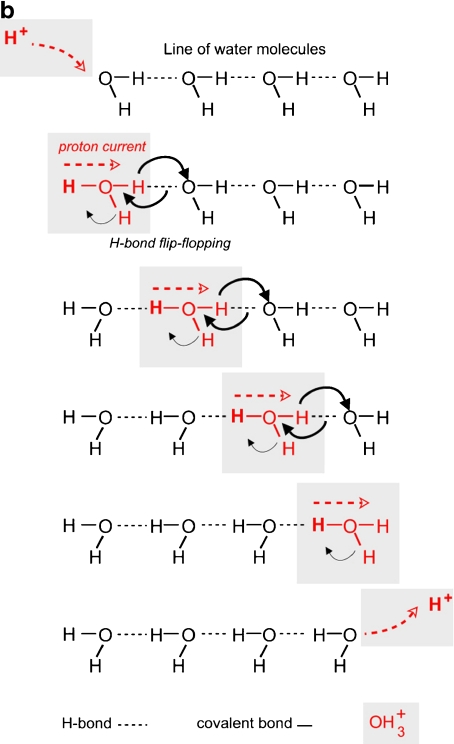Fig. 6.
Iterative model for signal transfer. a Simplified representation of signal transduction along a cascade of phosphatase-kinase molecules. Each element of the chain has two functions: kinase (Ki) and phosphatase (Ph), the former inhibited by phosphate ion, and the latter activated, for example. A phosphate ion “IN,” liberated from one element of the chain, binds (by Ki action of this element) to the following one (1). This one undergoes an allostery transformation (in blue) which activates its Ph function (2). It exercises on itself its own phosphatase activity to liberate the phosphate ion which inhibits its Ki function (2). This process is iterative (3), (4), (5). At the end of the process, the entering ion has not left the first element of the cascade. The outgoing ion is the provided by the last element of the cascade (5). b Proton current along a linear chain of water molecules, according to the Grotthus representation. As in (a), the entering proton does not leave the first water molecule of the chain. The outgoing proton is provided by the last water molecule of the chain


